How to Spend 7 Days in Tokyo With Only $100
Courtesy by http://www.broketourist.net/7-days-in-tokyo-for-100/
So here’s a fact:
“Tokyo has the most Michelin-starred restaurants in the world.”
What does this have to
do with how to spend a week in Tokyo with only $100? It doesn’t,
really. I just need an introduction and this piece of information seems
like a good way to annoy you Broke Tourists out there – by pounding in
the fact that you can’t afford to even consider dining at these
restaurants with your meager budget.
Prior to Arrival
First things first
Just like I had pointed out in the 7
Days in NYC for $100 article, the only way you can possibly make this
happen on the budget is if your accommodation is free. Besides Couchsurfing, there are multiple other hospitality networks to tap into when you’re trying to find a host. To name a few: Hospitality Club, Global Freeloaders, and Servas.
Before leaving the comfort of your home
and head to Japan, it’s best to arm yourself with the free app provided
by the Nippon Telegraph & Telephone East Corporation (NTT East)
called NAVITIME for Japan Travel.
Besides having features like train map, transit search, map with GPS,
database of points of interest, the app also allow user to do an offline
search of free Wi-Fi spots in the order of proximity to current
location. The reason I suggest you get this prior to arrival is because
free wi-fi connection is difficult to come by in Tokyo in general. BUT!
Starting February this year, NTT East has been offering the app users
the ability to obtain an ID and password to use their free Wi-Fi network
for two weeks with no charge! (Apply for this prior to entering the
country.)
Another homework you should do in
advance is booking reservations for a few free services in Tokyo. These
include reservation for watching a sumo training in one of the sumo stables, joining a guide tour of the Imperial Palace, and having a local Tokyoite as a personal tour guide.
Also, know that if you’re visiting Tokyo
during your birthday week, you may want to visit these two places on
the actual birthday for free entry and freebies: Tokyo Tower & Tokyo Joypolis.
BUDGET SPENT ON ACCOMMODATION: $0
Day 0 – Sunday (Arrival)
Getting into town
For those never been to Tokyo, you
probably didn’t know that Tokyo Narita Airport isn’t exactly in Tokyo.
It is in fact, almost 60 kilometers away. This equals to expensive and
long commute into Tokyo. Now, I can help you with the expensive part,
but you’ll have to put up with even longer commute. There are multiple
avenues to get to town; the cheapest is via Tokyo Shuttle Bus. It costs
¥1,000 and takes approximately 90 minutes. The buses run every hour.
Once in Tokyo, you’ll have to take
either the train and/or subways to your host’s place. With the two
different subway operators (Tokyo Metro and Toei), one railway company
(JR) and a some other private line operators, navigating your way can
seem daunting. Just keep in mind, the rule of thumb is the less you
change between the different operators on a single journey, the cheaper
your trip will be. The fare depends on which stop you’re taking the
metro to (roughly, it should be less than ¥250.)
Food… let’s talk about the gameplan for
your food while in Tokyo. Let’s be honest, it is mission-impossible to
fit sushi and sashimi into the budget. I can, however, make sure you
won’t starve to death. Throughout Tokyo, you’ll be able to find many 100-yen shops.
Everything in there costs ¥100 (well, technically ¥108 after tax),
including food. A personal recommendation for breakfast will be Dorayaki.
It’s a typical Japanese red bean pancake. Not exactly the healthiest,
but it’s guaranteed satisfying. Dorayaki found in 100-yen shops almost
double in size from the regular ones found in other convenient stores
(and costs 2/3 the price!)
Onigiri
is another cheap and good option to have. It is a traditional portable
rice ball that comes in either oval or triangular shape, often wrapped
in seaweed. Onigiri with various fillings and flavors are available in
all convenience stores in Tokyo. They run at roughly ¥150 each.
I will write more recommendations on
cheap meals throughout this article. But for ease of purpose, let’s just
say, we budget at ¥550/day on food. An extra tip: tap water in Tokyo is
safe to drink.
BUDGET SPENT FOR THE DAY: ¥1,250 / USD $12.50 (Transportation), ¥550 / USD $5.50 (Food)
Day 1 – Monday
Hacking Tokyo
Okay… so from your spending on
transportation the day before, you probably have come to realize that
it’s not cheap even just to get around in Tokyo. At this rate, your $100
budget definitely won’t make it. Fear not, my friend, fear not! Head
over to 1-25 Asakusa (Tel: 03-3845-7555) in the Taito neighbourhood
(nearest station: Asakusa Station on Tsukuba Express Line). There, you
can rent a bicycle for 7 days for ¥1,200. Voila! Your transportation is
then taken care of for the week, for cheap too! Remember that NAVITIME
for Japan Travel app that I suggested to download prior to arriving in
Tokyo? It will come super handy to help you navigate around the city.
You’re welcome!
Now, armed with your bike, a good site
to start your Tokyo exploration is perhaps seeing the city itself from a
bird’s-eye view. While, Tokyo Tower and Tokyo Skytree are the two
obvious places to do this, they cost a pretty penny. We’ll go with the
free option: Tokyo Metropolitan Government Observatories.
Perched up on the 45th floor of the twin buildings, the two
observatories (north and south) grant visitors a superb panorama of
Tokyo. On a clear day, it’s even possible to catch a glimpse of Mount
Fuji. Also, since it’s free, it may be worth your while visiting in the
evening as well. Big cities are always stunning when its fully lit up.
The observatories close at 11pm.
Not far from the observatories is the Meiji Jingu Shrine.
It’s located in a large forested area with a massive torii gate made of
1,500-year-old cypress marking its entrance. This Shinto shrine is
dedicated to the divine souls of Emperor Meiji and his consort Empress
Shoken. Many of the trees you see in the park were donated by people
from all over Japan and overseas to commemorate the late King. Admission
to the main shrine is free although there are other parts like the
treasure house and the inner garden that charge a fee.
Tokyo is a city full of juxtaposes. This is especially apparent when you step out of the park and cross the street to get to Harajuku.
Gone is the tranquility. Find yourself instead in the hustle and bustle
of capitalism to its max. Harajuku is infamous as a center of Japanese
youth culture where fans and aficionados of Japanese street fashion and
associated cultures gather.
Spend the rest of your day either people
watch in Harajuku, or meet up with your volunteer guide and have
him/her show you around. Some other obscure things to do in the area
include: picking up safety skills during earthquakes at the Tokyo Fire Department Life Safety Learning Center or learning about the Japanese’s awesome fire and rescue system at the Tokyo Fire Museum. After all, Japan is prone to earthquake and earthquake causes fire. Just saying…
Food tip for the day: Depachika’s free food sampling.
Depachika is a contraction of the words Depato (department store) +
Chika (basement). As the name suggests, depachikas can be found in the
basements of many department stores in Japan. It’s a heavenly floor
filled with all sort of food your heart could desire. Head over and walk
your way through the different booths since most vendors offer free
tastings.
BUDGET SPENT FOR THE DAY: ¥1,450 / USD $14.50 (Transportation), ¥550 / USD $5.50 (Food)
Day 2 – Tuesday
A fishy start
Tsukiji
wholesale market in central Tokyo is best known for its fish markets
and its tuna auction. The number of visitors allowed for the tuna
auction is limited to 120 person per day. Split into two groups, the
first group of 60 visitors is admitted from 5:25am to 5:50am, while the
second group from 5:50am to 6:15am. The free admission is on first-come,
first-serve basis. Normally, you’d probably have to take a cab to go
there because the Tokyo metro system doesn’t run early enough to let you
be there in time. But hey, you got your bike! Problem solved.
After the fish market, bike your way north while hitting up a few interesting spots along the way. The Advertising Museum Tokyo (ADMT)
is a high-tech and interactive museum covering the historical progress
of advertising and marketing from the early 18th century woodblock
prints to today’s multi-million advertising campaigns. Just on the other
side of Tokyo Expressway from the museum is the space-age Nakagin Capsule Tower.
The building has 140 prefabricated capsules that were fitted into main
concrete core. Although it started out as a bold architectural feat, the
tower has now fallen into disrepair. It still, however, makes a good
photo op.
If all the biking is making your thirsty, stop by Free Cafe Harimaya Station.
When it first opened, this free cafe in Ginza, run by a traditional
cracker maker Harimaya, offered free rice cracker treats as well as
drinks (coffee, green tea and juice). While they now charged for the
crackers, drinks are still free. Drop in for their freshly grounded
coffee and roasted green tea.
One of the landmark in the Ginza
district is the Sony Building. It features a variety of shops, showrooms
and restaurants. Among these are the Sony Showroom,
which is free to enter. If you’re a tech-geek, you’ll get to geek out
at the latest Sony gadgets and have the chance to have a hands-on
experience with each and every one of them. Many of the products are
also strictly sold in Japan.
If you’re more of a financial wall-street type, visit instead the Tokyo Stock Exchange.
Be warned that the TSE is pretty much run with technology these days so
there isn’t much going on even during the trading hours. English tours
and simulated stock trading games are offered at 1:30pm everyday. If
interested, reserve one day prior. Another money-related site nearby
worth visiting is the Bank of Japan Currency Museum.
Find a collection comprised of currencies of ancient to modern Japan,
as well as other materials related to money in general such as wallets
and lottery tickets.
Regardless being a geek or a finance sort, if you’re in Tokyo, you have to check out Akihabara,
the Electric Town at night. After World War II, it became a major
shopping center for household electronic goods and the post-war black
market. Today, it is an otaku cultural center and a shopping district
for video games, anime, manga and computer goods.
BUDGET SPENT FOR THE DAY: ¥550 / USD $5.50 (Food)
Day 3 - Wednesday
Empire of the Sun
The Imperial Palace Grounds
in Tokyo is located in what was originally the site of the Edo castle.
The grounds are now home of many offices, as well as the residence of
the Emperor of Japan. Visitors are welcome to join free hour-long guided
tours. Prior online reservation is necessary through the official
website but you should have done this as your pre-arrival homework.
To continue on the political theme, head over to the Japanese Imperial Diet
for another free tour. The Diet is housed in a landmark pyramid-domed
building. When no governmental meeting is in session on weekdays, the
Diet guards escort visitors to parts of the establishment including the
Emperor’s Room. The tour runs on the hour and each last about 60
minutes. No reservation necessary.
A few activities to choose from in the
afternoon is to either visit temples or check out artsy scenes. For the
former, head over to Atago Shrine and Zozoji Temple.
With its steep stairs leading to the Atago Hill representing hard work
and success, the Atago Shrine attracts college graduates and corporate
climbers alike. Zozoji Temple is famous for one of its garden at the
cemetery where rows of stone statues are found decorated with small
clothing and toys. These statues are gift for Jizo, the guardian of
unborn children to ensure that they are brought to the afterlife.
For the latter activities, head over to Espace Louis Vuitton and Only Free Paper.
At Espace Louis Vuitton’s 7-floor building, find free rotating art
exhibition on display throughout the year. At Only Free Paper, find free
papers and magazines covering a wide variety topics. The store is also
located in the middle of one of the trendiest area in Tokyo – at the end
of “Cat Street” in Shibuya.
Whichever activities you ended up choosing, be sure not to miss one of the world’s most recognizable intersection – Shibuya Crossing. For the best view, go to the Starbucks that is on the second floor of a building by the intersection. Also, don’t miss the statue of Hachiko!
It’s a monument dedicated to a Japanese Akita dog from the beginning of
the 20th century that’s known for his unwavering loyalty. The plaza
where it is at is a popular meeting spot in Tokyo.
A trick to cheaping it out on food is to crash a university’s cafeteria. Do so at Waseda University’s Okuma Garden House. During lunchtime, you’re able to get a medium-sized curry set for under ¥200.
In the evening, choose between a few night scenes: Ruby Room clubbing, OATH dance parties, or What The Dickens pub scenes. Each has its own twist and flair, but all don’t have cover charge.
BUDGET SPENT FOR THE DAY: ¥550 / USD $5.50 (Food)
Day 4 – Thursday
Plastic Tokyo
Situated in the east of central Tokyo by the bay is a large artificial island of Odaiba.
It was built upon what was originally a set of man-made fort islands of
the Edo Period. In the 1980′s, a massive development project was
undertaken to make Odaiba what it is today, a popular shopping and
entertainment district.
Odaiba is connected to mainland Tokyo by Rainbow Bridge.
Biking across the bridge is forbidden. However, you’re allowed to walk
your bike across with wooden boards attached to the tires. The bridge
has two separate walkways. The north side of the deck offers views of
Tokyo skyline, with Tokyo SkyTree (world’s second-tallest structure) and
Tokyo Tower. The south side offers views of Tokyo Bay, Daiba park, and
Mount Fuji (on a good day). The walk across Rainbow Bridge is about 1.7
kilometers which can be easily done within an hour.
Once you make it to the island, there
are no shortage of free things to do and check out. You’ll find
everything from a space-age Fuji TV Building, an 18th-century South European themed mall, a scale-copy of Statue of Liberty and a massive Gundam robot. Other free attractions worth checking out are the Panasonic Center, Museum of Maritime Science, Toyota Megaweb and Rainbow Sewerage Museum.
If you’re still on the island in the
evening, be sure to check out the Gundam bot lit up in with a dramatic
projection on the backdrop (7:30pm, 8:30pm, 9:30pm for 11 minutes; 8pm
& 9pm for 2 minutes). While waiting for the light show, drop in Gundam Front Tokyo
theme park. Although most of the features in the theme park charge
admission fee, there are a few section which are free. One of these is
the Gunpla section where over 1,000 kinds of Gundam plastic models
manufactured since 1980 are on display.
A cheap dinner option is Yoshinoya.
This chain stores may already be familiar to a lot of you since they
have locations in many Asian countries as well and Australia and United
States.
BUDGET SPENT FOR THE DAY: ¥550 / USD $5.50 (Food)
Day 5 - Friday
Big in Japan
Sumo is quintessentially Japanese. To learn about this sport, it is possible to attend a sumo training session,
or an “asageiko,” in one of the many sumo stables or “beya.” Many
companies charge tourist a fee for the opportunity to visit a sumo
stable, but it can in fact be done for free. Some of the sumo stables,
mostly located in the Ryogoku and Kiyosumi areas, welcome visitors to
view their morning practice (which usually starts at around 5:30am –
10am.) To schedule an appointment to visit an asageiko, call a day in
advance.
Followed up your sumo knowledge with a visit to the Sumo Museum.
It is located on the first floor of the Ryogoku Kokugikan (the largest
indoor sumo hall in Tokyo.) This small museum is dedicated to the
history of sumo, particularly artifacts and ceremonial clothings.
Admissions to it is free when tournaments are no in session.
In the afternoon, check out the nearby Tokyo Restoration Memorial Museum.
The museum hall exhibits collection of photographs and articles in
regards to the Great Kanto Earthquake in 1923 and the World War II air
raids. Many lives were lost during these two disasters. Adjoining the
museum is a memorial hall where all the unclaimed bodies are put to
their final resting place in the temple pagoda.
For a less morbid attraction, there are the offbeat Stationery Museum, Origami Museum, and a tech geeks’ temple – Kanda Myojin.
This shrine has become the place in town for the tech crowd to connect
with their spiritual side. Instead of the predictable embroidered cloth
bags, Kanda Myojin offers their charms in the form stickers that look
like computer hardwares. They come in three separate pieces: a
credit-card-sized one for the wallet, a medium-sized sticky strip for
the computer, and a tiny SD-card-shaped sticker for the mobile phone.
Geek of the world can now rejoice for never again will their ID’s be
stolen nor their gadgets go bonkers.
For dinner, try the working-man noodle shop – Hako Soba.
These cheap soba joins run on automatic food ticket vending machine
system. Unfortunately, the buttons of the machine are only in Japanese.
The cheapest options are likely to be the basic dishes of kake or
kitsune soba.
BUDGET SPENT FOR THE DAY: ¥550 / USD $5.50 (Food)
Day 6 - Saturday
Do as the Japanese Do
There are a few alternatives as to how
to spend your day today depending on your situation. If you’re catching
an early flight tomorrow, I recommend that you just skip to the
itinerary for tomorrow.
If not, then consider spending a relaxing day in the outskirt of Tokyo. Nogawa Park
is located in the western part of central Tokyo, about 50-minute train
ride away from Shinjuku. On summer weekends, find locals picnicking and
BBQing in the park. Transportation costs approximately ¥490 one way. If
you’re positive about your stamina, try biking and spend the money on
snacks for your picnic instead!
Coming back from a day out in the
nature, you can wash the dirt and sweat away and soak in a hot bath in a
Japanese onsen (hotspring). Jakotsuyu (1-11-11 Asakusa, Taito-ku)
is an establishment found in the center of Asakusa and has been around
since the Edo period. It’s extremely affordable at ¥450. Enjoy the
painting of Mt. Fuji that looms over the interior of the bathing area.
Do bring the necessary toiletries to avoid extra rental charges.
In the case that you don’t have your
accommodation sorted out for the night, skip the picnic and the onsen
because you’ll need the money for a place to stay. The cheapest and
perhaps the most interesting way is to stay at an “internet cafe”. KaraNet24
is a nine-story building in Shibuya where broke tourists, young
runaways, divorced husbands, homeless, jobless, and drunk businessmen
crashed in the evening. Basically, for ¥1500, you can get a tatami room
that you’ll be able to sleep in, while also enjoy all the amenities:
unlimited internet, karaoke, and manga.
For dinner, consider Hanamaru Udon.
Similar to Yoshinoya, Hanamaru Udon is essentially another fast-food
chain where you can have a sit-down meal of udon, soba, curry or beef
ricebowl.
BUDGET SPENT FOR THE DAY: ¥550 / USD $5.50 (Food), ¥1000 / USD $10.00 (Transportation), ¥450 / USD $4.50 (Entertainment)
Day 7 - Sunday
Leave your heart in Tokyo
Since it’s your last day in Tokyo, which
is also the last day of your bike rental, make your way back to the
Asakusa district. This neighborhood is chocked full of things and places
that are quintessentially “old” Tokyo. The most famous of which is the
colorful Sensoji Temple. This Buddhist Kannon temple is the oldest temple in Tokyo, dating back to 645 AD.
The main entrance of the temple is through the Kaminarimon (Thunder Gate). Near the Kaminarimon is a newly built Asakusa Tourist Center.
This stunning structure is designed by a renowned Japanese architect
Kengo Kuma and it looks not unlike the bathhouse straight off the anime
“Spirited Away”. While you’re there, also inquire about the free Panda Bus that can take you around the neighborhood towards Skytree complex and the free Asakusa Walking Tour (11am & 1:15pm).
Leading up from the gate to the Sensoji
Temple is a shopping street of over 200 meters called Nakamise. Vendors
sell everything from Buddhist paraphernalia to assorted tourist kitsch.
There are also plenty of food vendors. However, if you’d rather save
your money to spend on souvenirs, then grab yourself a cheap and hearty
lunchbox from Paku Paku Bento Box at only ¥250 each.
If your schedule allows, consider visiting a few spots around Asakusa. Just on the west of Sensoji Temple is the Kappabashi-dori,
a.k.a. Kitchen Town. It is a street in Tokyo which is almost entirely
populated with shops selling everything that has to do with kitchen. As
an offbeat tourist attraction, the Kitchen Town is famous for its fake
plastic food replicas called Sampuru. The name Kappabashi-dori is
derived from the Japanese folklore creature, Kappa, that used to be
prevalent in the neighborhood back in the days. When walking down the
street, find images and statues of Kappa that has become the mascot of
the area. Learn more about Kappa at the Sogenji Kappa-dera Temple.
An alternative is to visit the Imado Jinja Shrine
on the north of Sensoji. If you’re out of love and out of luck, this
top love shrine in Tokyo is the place to visit. Furthermore, Imado Jinja
also claims to be the origin of the “Maneki Neko” of the “Beckoning
Lucky Cat”. At the shrine, you can find a statue of two cats, male and
female, joined together in their beckoning pose. Having your photo taken
with the statue is considered lucky. Whatever your thing is, be it
love, luck or you’re simply a cat lover, it will be a good way to end
your cheapo Tokyo trip here.
Note: Do remember to spare ¥1,450 for your commute back to Narita airport!
BUDGET SPENT FOR THE DAY: ¥550 / USD $5.50 (Food), ¥1,450 / USD $14.50 (Transportation)
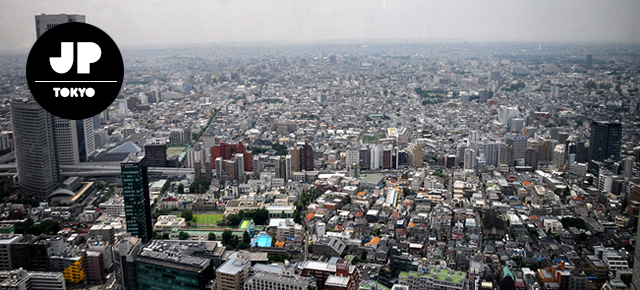
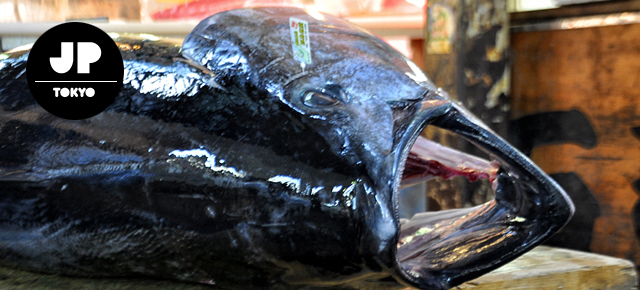
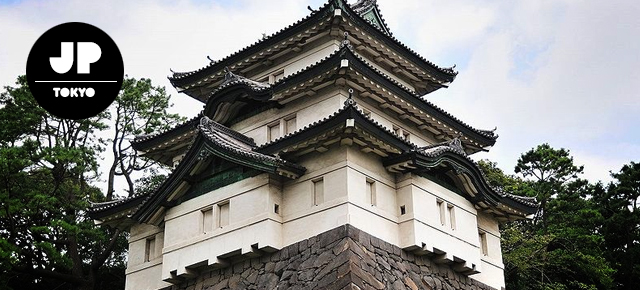
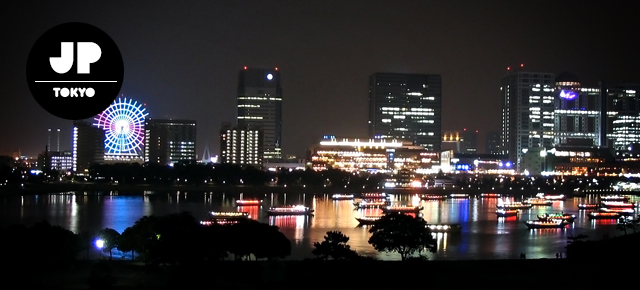
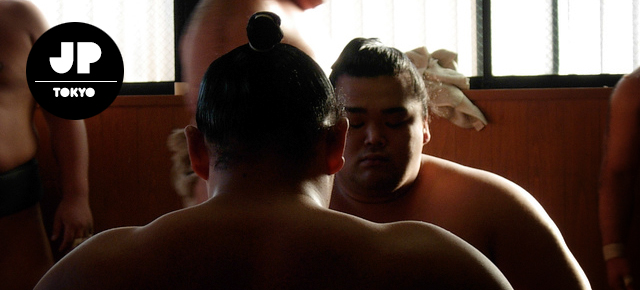
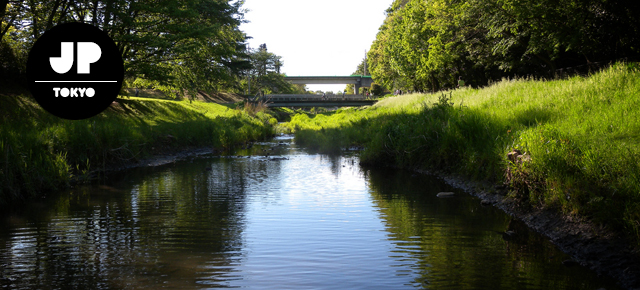
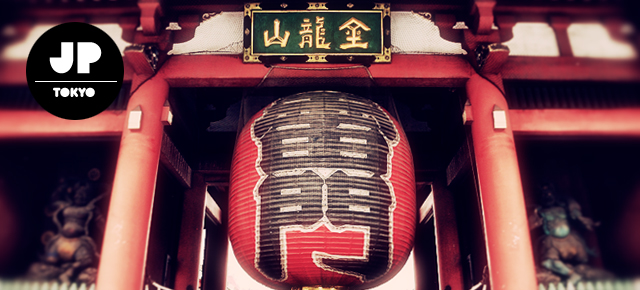
0 komentar:
Post a Comment